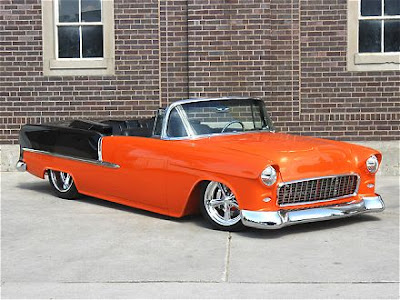 Of all the different forms that the motorsport world has ever known, no venue has ever put a car's true performance to the test like the quarter-mile dragstrip; a lot of us drift around a circle at a high speed, but reaction time is everything when it comes to putting your "motor where your mouth is," and no one knows this better than Chicago-local drag racer, Mario Orsini.
Of all the different forms that the motorsport world has ever known, no venue has ever put a car's true performance to the test like the quarter-mile dragstrip; a lot of us drift around a circle at a high speed, but reaction time is everything when it comes to putting your "motor where your mouth is," and no one knows this better than Chicago-local drag racer, Mario Orsini.Orsini is an active member of one of the Midwest's premiere, match and circuit drag racing clubs, the "Chicago Wise Guys;" since being founded by president Pete Demos in 1995, the Chicago Wise Guys have expanded as a drag racing organization, growing mostly through fan membership and participation at the track. Orsini, a "Chicago Wise Guy," is the owner of this twin-turbocharged and alky-injected, 7/8-scale '57 Chevy.
The 7/8-scale shoebox racer sits on top of a Rodger Elliot chassis, and is powered by a 481-cube, Alan Johnson engine with twin, Precision 88mm turbos. The twin-turbo alky V8 chases a Lenco trans, and the entire assembly utilizes Crower's 3-disc clutch system.
This pro-built setup is exactly that, and Orsini's outrageous setup is good enough to win this "Wise Guy" an E/T of 6.71 at 215mph, an incredible track run by the standards of any professional drag racing organization. Orsini's sponsors consist of The Race Shop, Powermaster, A-Team Speed Shop and TMD Construction of Lombard, Illinois, along with The Paint Spot of Addison. He also accredits crew member, Mike Vivona with the overall success of the '57 drag car, and Orsini names Mike Miller of The Race Shop and Rob Adler as being among his greatest helping hands as well.
In this video, Orsini's full-custom '57 shoebox is seen idling and revving at Byron Dragway in Byron, Illinois. The radical sounds of Orsini's 481-cube, alky-injected turbo mill are evidence of just how fast of a drag car Orsini's over-the-top shoebox really is!
Read more about Orsini's '57 on Chevy Hardcore!!!














